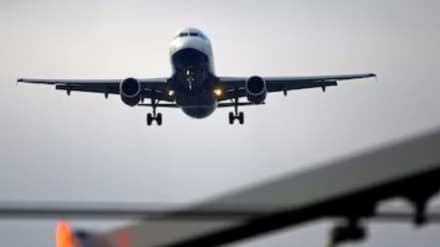None of the 35 flying training organisations evaluated by the aviation watchdog last week received an A+ or A rating. Training infrastructure & safety standards are the weakest links, raising doubts about the quality of these training schools & the pilots they are producing, writes Nitin Kumar
l What does the DGCA report say?
THE DIRECTORATE GENERAL of Civil Aviation (DGCA) last week released its first-ever rankings of Flying Training Organisations (FTOs). The report revealed that not a single one of the 35 FTOs evaluated received an A+ or A rating, meaning none achieved a score of 70% or higher across key parameters such as safety standards, performance, compliance, student support, and operational adherence to regulations.
Moreover, 22 of these FTOs were rated ‘C’, indicating scores below 50% which raise concerns about their quality, safety, and overall readiness to train the country’s future pilots.
The 12 FTOs that scored between 50% and less than 70% emerged as the top performers, earning a ‘B’ ranking. The growing demand for pilots, coupled with the poor quality of training institutes and increasing course costs, means that inadequately trained licence holders may be putting the lives of air passengers at risk. In July, the aviation watchdog had introduced a ranking system for FTOs as part of efforts to improve the quality and safety of pilot training activities in the country. The decision came after various incidents involving planes of FTOs and apparent lapses.
l DGCA’s action against underperformers
NEARLY TWO-THIRDS OF FTOs ranked ‘C’ will receive formal notices from the DGCA, directing them to undertake self-assessments and enhance their performance ahead of the next biannual rankings, scheduled for release on April 1, 2026. However, in case they are unable to improve their rankings in the next round, there are no penalties envisaged in the system. But since the aviation regulator also does auditing and licensing of FTOs, it can take action if any FTO fails to meet those parameters.
The next round could also see a higher number of FTOs included, as the DGCA plans to expand the survey to its full capacity of 40 institutes. This year, five FTOs were not ranked — four of them because they had not completed the mandatory 18 months of operation as of August 31, 2025, and one because its approval was no longer valid on that date.
l How FTOs can improve their scores
THE TWO MOST critical areas, training infrastructure and safety standards, make up 60% of the total score, underscoring where most FTOs are falling short. Operational aspects, weighted at 40%, include key factors such as student-to-aircraft and student-to-instructor ratios, fleet size, and the availability of simulators and ground schools. Safety standards (20%) assess the number of accidents and incidents in the past year.
Another 20% is allocated to training performance, tracking the average time to complete 175 flying hours, aircraft utilisation rates, and trainee completion ratios. Student support and regulatory compliance each carry 10% weightage. These cover grievance resolution, financial aid, placement support, transparency in fees, DGCA safety observations, and breath-analyser violations.
To climb the rankings, FTOs must focus on strengthening their operational capacity, enforcing safety protocols, and delivering student-centric, compliant training programmes.
l The need for these rankings
THE DGCA’S DECISION to introduce rankings follows a rise in accidents and serious incidents at flying schools in recent years, primarily linked to inadequate aircraft maintenance and poor adherence to safety regulations.
Currently, 800 to 1,000 students graduate from these FTOs annually and get commercial pilot licences —a number poised to grow significantly in the coming years, driven by surging air traffic. Domestic air passenger traffic has already doubled in the past decade, rising from 110 million to 220 million, and is projected to reach 400 million by 2029. According to civil aviation minister K. Rammohan Naidu, India will require 4,000 additional aircraft over the next 20 years and is planning to build 200 new airports to meet future demand. The introduction of these rankings will subject FTOs to increased DGCA oversight and public scrutiny, creating a strong incentive for them to raise their standards.
l Training fees touch the sky
AS OF MARCH 2025, India has around 12,200 licensed pilots. This number is expected to nearly triple to 33,700 over the next decade, as per the ministry of civil aviation. Training 20,000 new pilots with the current inadequate infrastructure could pose a serious risk. The situation is especially concerning given that FTOs charge exorbitant course fees. Take the Indira Gandhi Rashtriya Uran Akademi (IGRUA), run by the civil aviation ministry. IGRUA received a ‘Category C’ rating and was ranked 25th by the DGCA.It charges an upfront fee of around Rs 45 lakh for a commercial pilot licence (CPL), which includes 200 hours of flying. This amount does not include the mandatory type rating — a certification needed to fly specific aircraft — which adds another Rs 15–20 lakh. Those who pursue airline-sponsored training programmes (not rated by the DGCA) may have to pay even more, up to Rs 1 crore in some cases.
